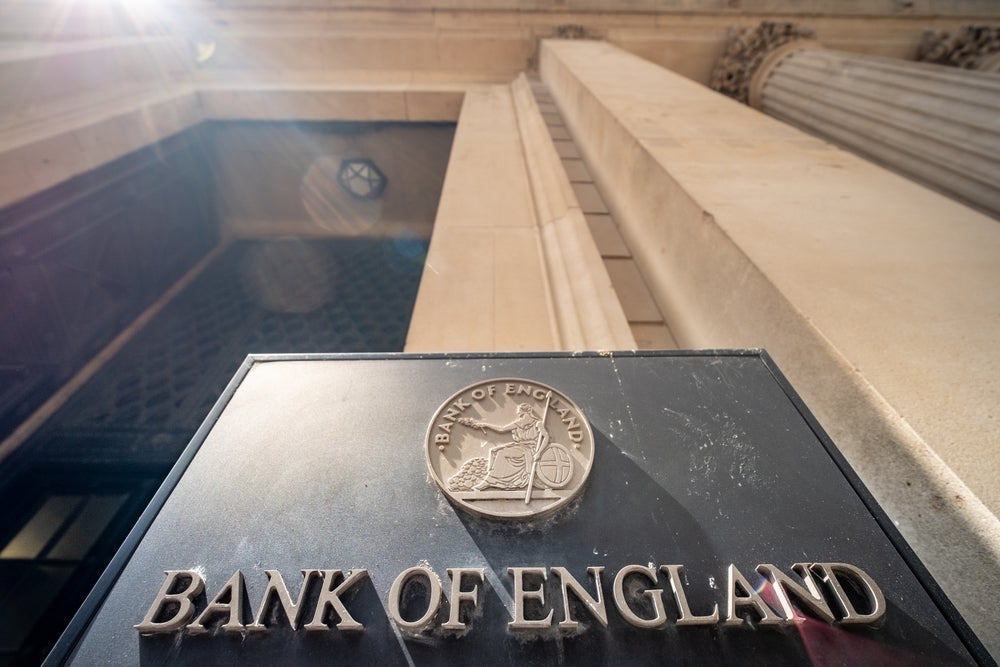
Bank lending across the eurozone is expected to rise 4.6% by the end of this year but will contract 1.8% in 2023 – the first decline since 2014 – as eurozone economies slip into recession, according to the latest EY European Bank Lending Economic Forecast.
Germany – traditionally the strongest of the major eurozone economies – and Italy are forecast to see the steepest declines in net bank lending next year, of 1.7% and 1.8% respectively, principally due to the economic consequences of their exposure to high energy prices.
As market demand for loans falls across the region, banks are also expected to tighten their lending criteria as they contend with rising interest rates and a volatile economic outlook.
EY EMEIA financial services managing partner, Omar Ali, comments: “While the European banking sector is on course for strong lending growth this year, 2023 is set to tell a very different story. The region’s economies are facing recession, and a contraction in borrowing driven by reduced demand and supply is forecast as consumers, businesses and banks become more cautious.”
The forecast fall in total bank lending in 2023 is driven principally by rising energy prices, interest rates and inflation and falling real household incomes affecting confidence and demand. The fall, however, is expected to be short-lived, providing the war in Ukraine does not escalate. A return to growth in bank lending of 2.7% is forecast in 2024 across the eurozone, followed by 3.7% in 2025, assuming inflation falls back, energy prices stabilise and confidence returns.
Ali further added: “The short-term economic impact will be felt universally, but small businesses are likely to struggle most if access to finance is constrained. Small businesses play a critical role in the economy and the lessons learned during the pandemic, when banks and policymakers across Europe worked together to support them, will be useful in this different, yet equally challenging period.”
How well do you really know your competitors?
Access the most comprehensive Company Profiles on the market, powered by GlobalData. Save hours of research. Gain competitive edge.

Thank you!
Your download email will arrive shortly
Not ready to buy yet? Download a free sample
We are confident about the unique quality of our Company Profiles. However, we want you to make the most beneficial decision for your business, so we offer a free sample that you can download by submitting the below form
By GlobalDataBusiness lending to contract almost 3% in 2023 – the weakest in a decade
Eurozone bank lending to businesses is set for 4.8% growth this year. Excluding 2020, when the support offered to businesses in response to the pandemic distorted lending figures, this would be the fastest rise since 2008; although some of this loan demand is linked to the need for liquidity rather than investment and growth.
However, sluggish economic activity, higher borrowing costs, supply chain challenges and the rising cost of capital goods, mean that net lending to business is forecast to contract 2.7% in 2023, representing the weakest performance in a decade.
Better news is on the horizon, with business lending growth of 3.1% forecast in 2024, followed by 3.9% in 2025, as economic conditions look set to improve again.
Consumer credit demand to contract 1.4% in 2023 – the first decline since 2014
Unsecured lending is forecast to grow 1.2% this year across the eurozone. This increase is small by historic levels and is largely attributed to the increase in consumer spending following the removal of COVID-19 restrictions, as well as the impact of higher inflation and relatively low borrowing costs.
However, a slowing economy and a predicted fall in real incomes is likely to prompt a fall in demand for ‘big ticket’ items and associated funding. The EY European Bank Lending Economic Forecast predicts unsecured lending will contract 1.4% in 2023 before returning to growth in 2024 (2.2%), followed by a rise of 3% in 2025, as economic conditions look set to improve.
Mortgage lending to grow only 0.5% in 2023
Mortgage lending across the eurozone is set for strong growth of 4.9% in 2022, despite rising interest rates. However, both demand and supply side factors suggest lending growth will slow into next year as mortgage rates rise along with the cost of living, and lenders tighten criteria and effectively reduce mortgage availability. The EY European Bank Lending Forecast predicts just 0.5% mortgage growth in 2023 – the slowest since 2014 – before growth is expected to pick back up with 1.9% in 2024 and 2.5% in 2025.
Loan losses likely to rise, but remain below Global Financial Crisis levels
A weaker eurozone economy is likely to drive a rise in impairments across all forms of bank lending, but the EY European Bank Lending Forecast does not expect significant increases, and certainly not at levels recorded during and after the eurozone debt crisis. Loan losses across the eurozone are forecast to rise 2.6% this year, from 2.2% in 2021, and slowly rise over the subsequent years – as is common within the economic cycle following a downturn – to 3.3% in 2023, 4.2% in 2024 and 5% in 2025. For context, loan losses peaked at 8.4% in 2013.
Tighter, post-Global Financial Crisis regulation and lending criteria should mean mortgage borrowers are better able to deal with higher rates, while the savings built up by households during the pandemic are likely to provide a cushion of support against falling incomes and rising job losses. On the corporate side, national government-backed loan schemes offered during the pandemic, which tended to offer generous repayment terms, should limit a rise in the share of non-performing business loans, at least in the short term.
EY EMEIA banking and capital markets leader, Nigel Moden, said: “Europe’s banks are playing a significant role in keeping capital flowing and ensuring access to crucial lines of finance at a challenging economic time. With high capital buffers and resilience built up over 15 years, the region’s major financial institutions are well placed to continue supporting customers and have shown impressive fortitude despite the ongoing market challenges they face. The recessions predicted this winter in many European markets will of course come as a challenge, but the expectation is that they will be relatively shallow and borrowing should rise steadily from 2024. As this more positive outlook suggests, the banking sector can return its focus to growth, innovation and improved sustainability.”
Germany – set for steepest economic decline of major eurozone economies
Although traditionally the strongest of the eurozone economies, Germany is set for the fastest decline in GDP next year due to energy price pressures, energy supply issues, and weaker overseas demand, with GDP expected to contract 1.1%.
The prospects for bank lending growth next year are also expected to be weak as demand reduces and overall bank lending in Germany is forecast to fall 1.7% in 2023. Mortgage lending is predicted to contract 0.1% in 2023 – the first decline since 2008 – and consumer credit is forecast to fall 1.6%. On the corporate lending side, the stock of business loans is expected to fall 2.9% in 2023, representing a 10-year low, as the economic situation deteriorates. However, the outlook for all forms of lending is expected to pick-up in 2024 with growth forecast to return at 3.2% (2.8% mortgage growth, 1.9% consumer credit growth and 3.7% business lending growth), followed by a further rise in 2025 of 3.8%.
France – expected to outperform its eurozone peers in the short-term
The French economy is expected to outperform its major eurozone counterparts in the short-term. However, a shallow recession over the winter and into 2023 looks likely, reflecting higher inflation, depressed consumer confidence and rising borrowing costs. GDP growth is forecast at just 0.2% next year.
Overall bank lending is forecast to fall 0.8% in 2023. Mortgage lending is forecast to rise just 1% next year – outpacing eurozone counterparts, but still France’s slowest rate since 2014. Consumer credit is forecast to fall 1.4%, representing the first contraction since 2013, while business lending is expected to decline 2.5%, marking its first fall in 14 years. A return to growth though is expected across all forms of lending in 2024 of 2.6% (1.9% mortgage growth, 2.1% consumer credit growth and 3.4% business lending growth). Total lending is forecast to rise 3.4% in 2025.
Spain – housing market exposed to interest rate rises
Spain is less exposed to potential gas shortages than other European countries, but high energy prices, weakening consumer confidence and high inflation mean the economy is likely to fall into a shallow recession this winter, with 0.8% GDP growth forecast in 2023.
In terms of total Spanish bank lending, the EY European Bank Lending Economic Forecast predicts a fall of 1.3% in 2023. The structure of Spanish mortgages (with the vast majority currently on variable rate contracts) means the housing market is more exposed to rising interest rates than many other eurozone countries. But new measures have recently been announced to provide support to those in difficulty and make it easier to switch to fixed term contracts, and recent lending survey data from the ECB suggests weakness in mortgage demand is less marked than in Germany and France.
Overall, mortgage lending is forecast to fall 0.6% next year, while consumer credit is forecast to decline 1.1%, reflecting high inflation and depressed consumer confidence, while business lending is expected to fall 2%. Like the other major eurozone nations, a return to growth is expected across all forms of lending in 2024, with a rise of 2% (1% mortgage growth, 2.6% consumer credit growth and 2.8% business lending growth). Total lending is forecast to rise 3.4% in 2025.
Italy – at risk of energy disruption and gas shortages
A positive tourist season, following the lifting of COVID-19 restrictions, boosted Italian GDP in the third quarter of 2022. However, Italy faces a difficult period ahead, not least because its economy is set to shrink 0.1% in 2023. Italy is at higher risk than some of its eurozone peers from disruption to gas supplies, owing to its high dependence on imported energy, as well as being more exposed to rising interest rates as a result of its large public debt.
In terms of overall bank lending, the forecast is for a fall of 1.8% in 2023. Mortgage lending is forecast to fall 0.3% next year – the first decline since 2014 and aligned to other eurozone economies, largely due to falling real household incomes and a tightening of monetary policy by the European Central Bank. Consumer credit is forecast to fall 1.5% next year, while business lending is expected to decline 2.8%. Like the other major eurozone nations, a return to growth is expected across all forms of lending in 2024, with total growth of 1.3% (1.4% mortgage growth, 2.2% consumer credit growth and 1.1% business lending growth). Net bank lending is expected to rise a further 1.9% in 2025.
Ali concluded: “European households, businesses and banks were well on the road to recovery from the worst of the pandemic when war in Ukraine began and markets were faced with a new wave of economic challenge. Rising inflation, interest rates and energy prices, along with disrupted supply chains, significant geopolitical and market uncertainty have combined to put significant pressure on economies, businesses and lenders in the short term. 2023 looks like it will be the most challenging year since the end of the financial and subsequent eurozone crisis. As long as the war in Ukraine does not escalate, the downturn is expected to be short-lived, with a bounce back forecast in 2024 and 2025. This makes it all the more important that banks and policymakers work together to weather 2023 and put Europe’s economy in the best place to recover quickly.”
For more on lending






